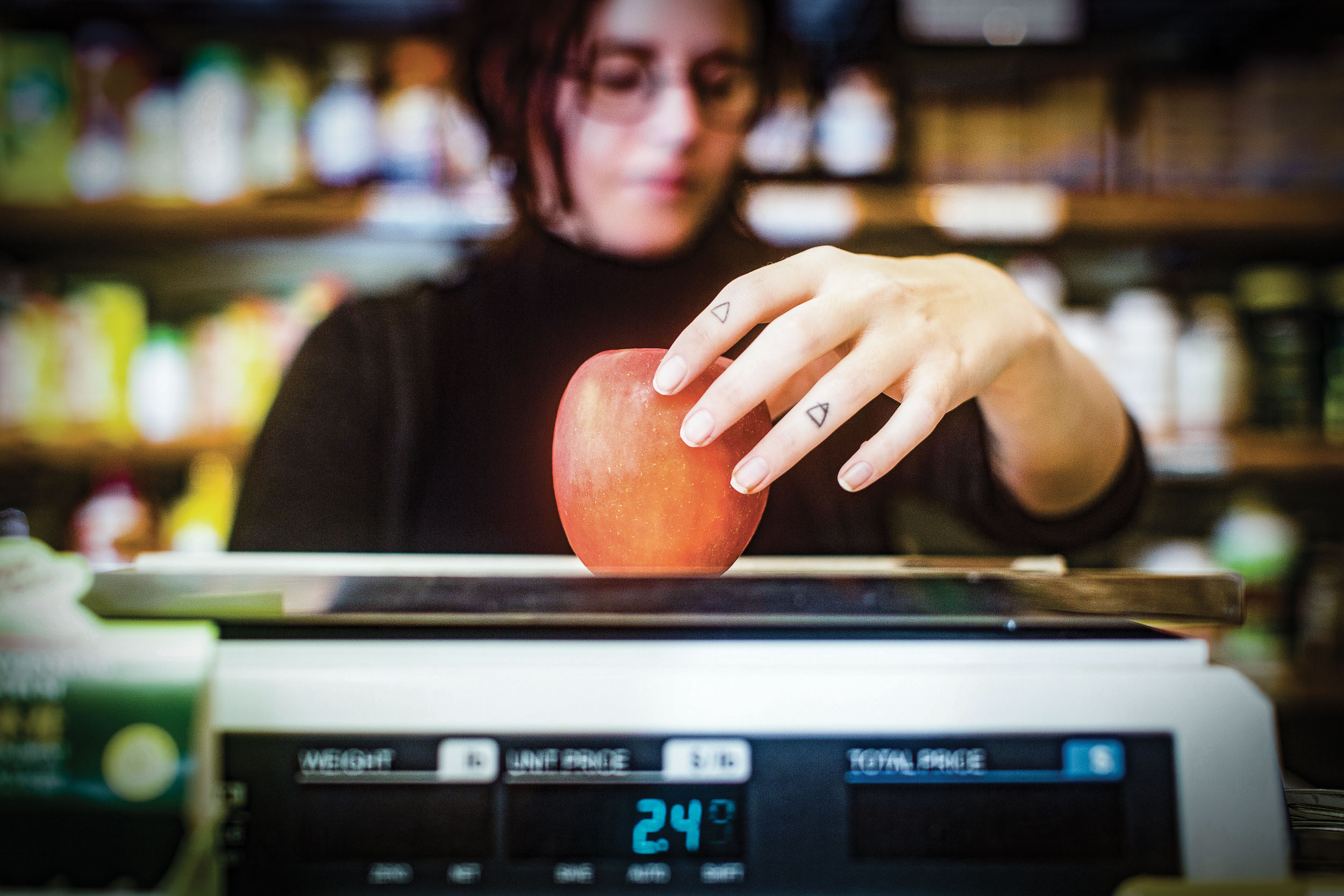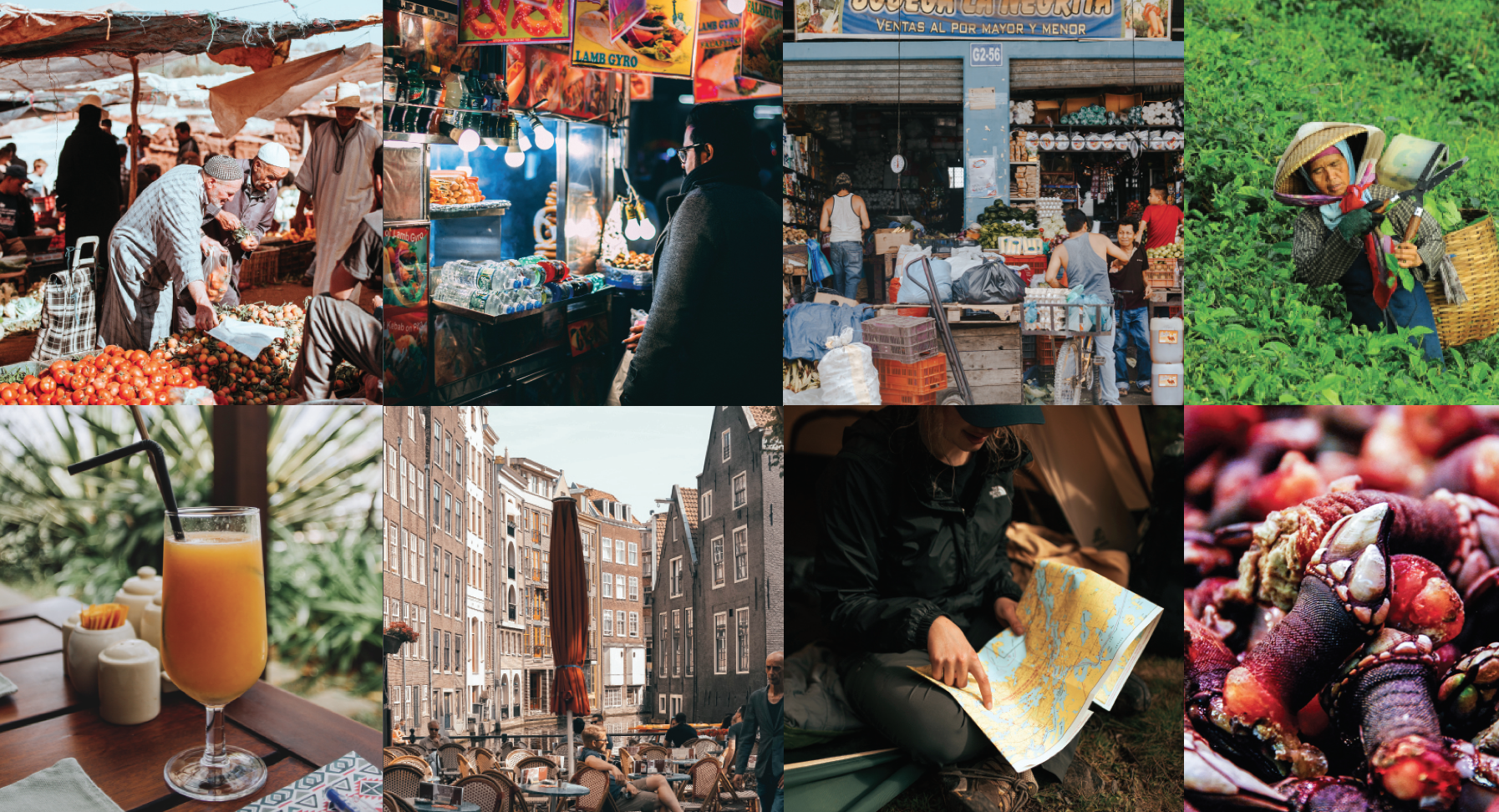How to Get the Most of Your Culinary Travels

photo by The Library of Acquired Images
Think of your vacations as experiences vs. trips.
“If you’re traveling to a fairly large city, Airbnb is a great resource for experiences—you can find beverage tours, how to make food, homemade pasta, go to the market, buy all the stuff,” Justin Carabello says. “We did this on a trip to Cleveland,” his wife, Emily, adds. “A local chef took us to a farmers’ market, helped us pick out the ingredients, and then we went back to our Airbnb and cooked it.”
Get off the beaten path.
Carrie Walters says that when she travels abroad, she avoids places with an English menu posted outside, because “that’s where all the Americans go.” Shelbi Nation recommends “trying new, lesser-known restaurants that will give you a real sense of the community—wherever you travel. Plus you’re supporting small businesses.”
Take a cooking class.
“When I was stuck at business conferences, my wife, Marlene, was taking cooking classes wherever we went,” chocolate-maker Paul Picton says. “It really enhanced our travels—we became culinary tourists, turning trips that were otherwise mundane into great explorations of the local food culture.”
Tour a farm or factory.
“Check out a local dairy. Taste the cheese,” says Nation. “Put on the white apron, hairnets, latex gloves. Get into it!” Chef Carrie Walters hangs out with cheese mongers when she travels and takes vinegar-tasting tours. And Paul Picton even toured an asparagus factory in the outskirts of Berlin: “They have a whole theme park dedicated to asparagus!” he says.
Research food-focused group tours.
The Carabellos say they found half-day and full-day food tours just through easy internet searches. Walters recommends searching Zingerman’s food tours (www.zingermansfoodtours.com), which offers domestic and international food-focused tours.
Take a note from the pros.
Chefs like Shelbi Nation study Bon Appetit magazine’s lists of new chefs and off-the-beaten-path up-and-comers whenever she travels. Emily Carabello mines the top-100 Michelin-star restaurants to see if there are any near where she might be traveling. “They’re not always as expensive as you think,” she says. You can also swipe itineraries from chef/cooking shows that have episodes focused on the region you’re visiting.
Hit the farmers’ markets and talk to locals.
“Google ‘food markets’—you never know what you’ll find,” Nation says. “And always ask bartenders for food recommendations. They can steer you toward places that are really good, but that haven’t exploded yet in terms of popularity.” Walters once got great local restaurant recommendations from a London policeman outside Westminster Abbey. And if you choose restaurants with communal seating—long tables where strangers can sit elbow-to-elbow—you’ll have a great opportunity to mingle with the locals.
Mine social media.
“I follow a lot of chefs, winemakers, creameries, and restaurants on Instagram, and I’m always making lists,” Nation says. “Or I’ll see that another chef from Cincinnati just went to some other country, and now he’s posting photos of his meals. I see where people are eating and where they’re drinking.”
Geek out with your trip prep.
“Get the travel guides—Frommer’s, Lonely Planet—make planning a trip fun, then get on the computer and map it out,” Walters says. Instead of relying on review sites like Yelp! or Trip Advisor, Walters recommends sites like Eater. And, of course, be sure to check out the local Edible publications wherever you go; visit EdibleCommunities.com for local editions and travel recommendations.
Visit independent and gourmet grocers, culinary stores.
Paul Picton also recommends visiting curated flea markets, where there’s a good chance you can find unique food vendors—including cooks with a flair for local recipes. Leigh Ochs always picks up local cookbooks in culinary stores. “They have their fingers on the pulse of the local food scene,” she says.
Pick the right hotel.
Shop for hotel packages that include food specials. (Or ask the concierge when you get there.) “Stay at smaller hotels, or, if you’re staying at one of the bigger ones, talk to the doormen and the guys who hail the taxis for local restaurant recommendations,” Walters suggests. “We like to stay at local B&Bs,” says Justin Carabello, “because you get great access to local people in your hosts.”
Try the street food!
“I am careful about it, but if you’re traveling in the U.S. or Europe, try those street vendors,” Walters says. “We’re more careful about this in places like Central America, where there is the risk of food-borne illnesses,” says Justin Carabello, “but when you travel in Europe, you can be more experimental. You don’t have to be all ‘haute cuisine’ to have a great food experience when you travel.”
Leave time for wandering!
“Plan … but wander,” says Picton. Be an explorer! “You might stumble upon a neighborhood coffee shop or sidewalk café that isn’t on any of the ‘best’ lists,” says Justin Carabello. “We do a lot of planning for our trips, but we leave gaping holes in our itinerary to explore and see what happens.”
Jenny Wohlfarth is an award-winning journalist and journalism professor at the University of Cincinnati with more than 20 years of experience. She has worked as a staff editor at several national magazines, and her work has appeared in many others, covering topics ranging from art/design and agriculture to nature and travel. She has traveled to Cuba, Guatemala, Iceland, and Namibia.





